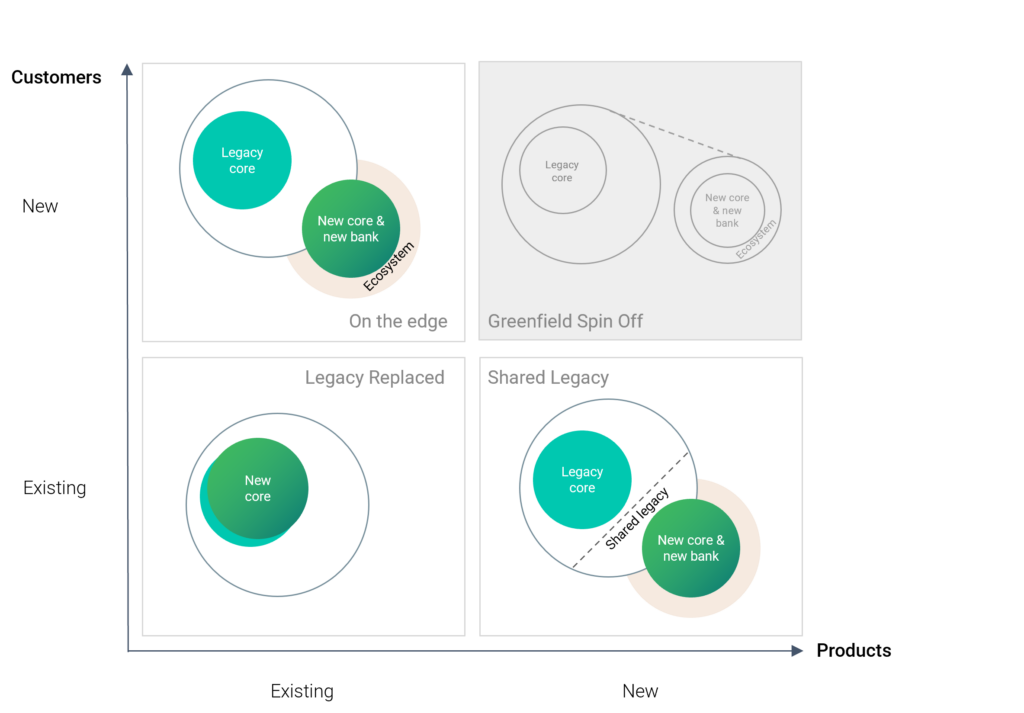Migrating the core banking system (CBS) with the latest technology is an inevitable trend, carrying multiple benefits to both banks and consumers. However, banks need to address critical questions in order to succeed.
In July 2021, the Mambu cloud banking platform successfully replaced the core technology for Cake digital bank in just 74 days. After just a few months of replacement, the number of Cake’s customers grew to 2 million, and to date has reached close to 3 million, proving the clear impact of changing core technology (Core Banking Systems – CBS).
Currently, Mambu and its partners are also building an ecosystem to support SME digital credit through direct connection with SME customer information platforms. Thereby, the bank can verify and approve loans for SMEs quickly, developing potential SME customers. But this also requires the bank to change the core technology to be able to integrate third-party applications and support the bank’s products and services.
Replacing or Co-operating?
Conventional banks with old-generation core architectures would not meet the goal to quickly grow in scale, with a reasonable cost and be able to cooperate with third parties as mentioned above.
To address this challenge, cloud-based core banking platforms such as Mambu offer solutions and tools for traditional banks.
The cloud banking platform Mambu learned from its experience in helping close to 300 customers in over 65 countries that the future of core banking migration is incremental transformation and needs to be aligned with business strategy and customer outcomes.
Historically, change has been seen as an expensive, risky, and time-consuming multi-year endeavour. Conventional banks face three major challenges when transforming, including Functionality (multi-toolkit with open API and connecting configuration ecosystem); Scalability (scalability across multiple products and geographies); And Integration (the flexibility to integrate into existing systems and technology platforms).
In turn, any core banking transition needs to address the speed issue – be faster to market and to set up an ecosystem, at the same time, reducing costs and risk of failure.
According to IDC (International Data Corporation) Financial Insights, banks in Southeast Asia are considering implementing a new core banking in addition to the traditional core. They are planning to take a more conservative, long-term approach by adopting strategies that help extend the life and value of conventional core technology.
These banks are wondering whether to replace the old core technology, develop a new core alongside the old one, or develop an independent digital banking brand within the incumbent bank.
Roadmaps and principles that banks can apply for successful core replacement
To prepare and define a strategy for core replacement, it is important to adopt an approach that addresses the most pressing business challenges. Typically, there are three paths companies can take: a dual-core strategy with gradual customer migration, a cutting-edge approach to a new layer of customer experience or undertaking a dramatic overhaul in which the entire old system is upgraded or replaced.
1, Heritage to be replaced: replacing (or upgrading) the monolithic legacy system every few years. Selected core components will be replaced based on the architecture roadmap.
2, On the edge: offering a brand-new customer experience and customer proposition, with a strong focus on customer acquisition through innovation, actively migrating existing customers, allowing cancellation and re-registration or account re-creation.
3, Shared legacy: gradual customer migration based on key lifecycle events such as new products or product transitions. This way, it’s easy to leverage existing digital capabilities such as customer relationship management (CRM), financial and non-financial risk management.

Key principles to ensure a successful core replacement:
1, ROI: KPIs should drive the scope of changes and should be phased to maximize their benefits.
2, Metrics and timeline: a clear business example for changes with an estimated timeline.
3, Product and data: a blueprint represents an accurate plan of product and data complexity.
4, Risk: planning for products and customer segments needs to align with risk appetites and commercial goals.
5, Compliance: ensure that any change plans, target infrastructure are in compliance with regulatory standards.
6, Flexibility: a successful change process must maintain flexibility to respond to changes and feedback loops.
With successful digital transformation experience for major banks, incumbents, neobanks and fintechs of all sizes in over 65 countries and serving over 110 million end customers, according to the Mambu cloud banking platform, Banks should gradually build a new digital bank following a multi-core approach, and gradually replace the old core banking where the technology is no longer needed.
Mambu calls this approach incremental transformation. The bank needs to identify a digital opportunity to start, then apply digital transformation initiatives with increasing frequency in a multi-core model, until the entire legacy core is replaced. This allows banks to digitise while transforming their legacy core at a pace that matches their goals, strategy, capabilities and risk profile.
By Pham Quang Minh – General Manager of Mambu Vietnam



